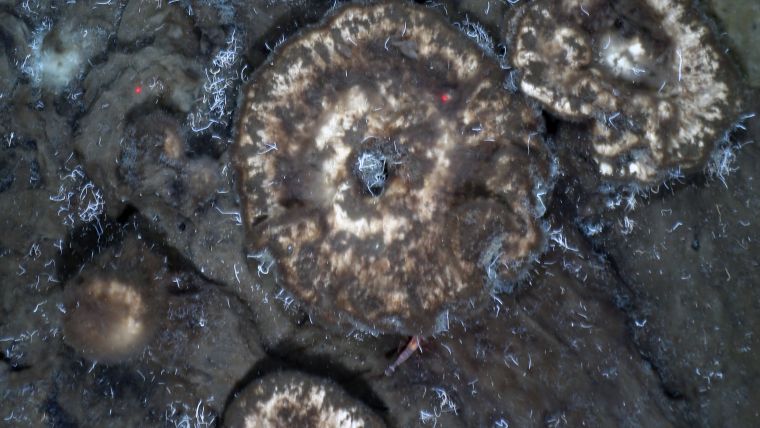3D Models Reveal Sponge Paths on Ocean Floor
Sponges are considered to be one of the most primitive forms of animal life, because they have neither locomotion organs nor a nervous system. A team around deep-sea scientist Prof. Antje Boetius has now discovered that sponges leave trails on the sea floor in the Arctic deep sea. They conclude that the animals might move actively – even if only a few centimetres per year. They are now publishing these unique findings in the journal Current Biology.
The surprise was great when researchers looked at high-resolution images of the sea floor of the Arctic deep sea in detail: path-like tracks across the sediments ended where sponges were located. These trails were observed to run in all directions, including uphill. “We conclude from this that the sponges might actively move across the sea floor and leave these traces as a result of their movement,” reports Dr Teresa Morganti, sponge expert from the Max Planck Institute for Marine Microbiology in Bremen. This is particularly exciting because science had previously assumed that most sponges are attached to the sea floor or are passively moved by ocean currents, usually down slopes.
Ocean Floor Observation and Bathymetry System
“There are no strong currents in the Arctic deep sea that could explain the structures found on the sea floor,” explains expedition leader Prof. Antje Boetius, who works together with deep-sea biologist Dr Autun Purser from the Alfred Wegener Institute, Helmholtz Centre for Polar and Marine Research (AWI) in the HGF-MPG Joint Research Group for Deep-Sea Ecology and Technology. The recently published recordings were made during an expedition at 87° North at the Karasik Seamount about 350 kilometres from the North Pole with the research icebreaker Polarstern in 2016 with a towed OFOBS (Ocean Floor Observation and Bathymetry System) camera system. “With OFOBS, we can create 3D models of the deep sea. The seamount’s summit was densely populated with sponges, and 69% of our images showed trails of sponge spicules, many of which led to live animals,” reports Autun Purser.
Many questions arise from these observations: Why do the sponges move? How do they orientate themselves? Possible reasons for locomotion could be foraging, avoiding unfavourable environmental conditions, or to distribute offspring. Searching for food in particular plays a major role in nutrient-poor ecosystems such as the Arctic deep sea, where we know that sponges have an important function. As filter feeders, they can utilize particle and dissolved organic matter and are intensively involved in nutrient and matter recycling by means of their bacterial symbionts. Sponges also provide arctic fish and shrimp with useful structures to use as a habitat. However, the scientists still have to investigate the mechanisms of locomotion.














